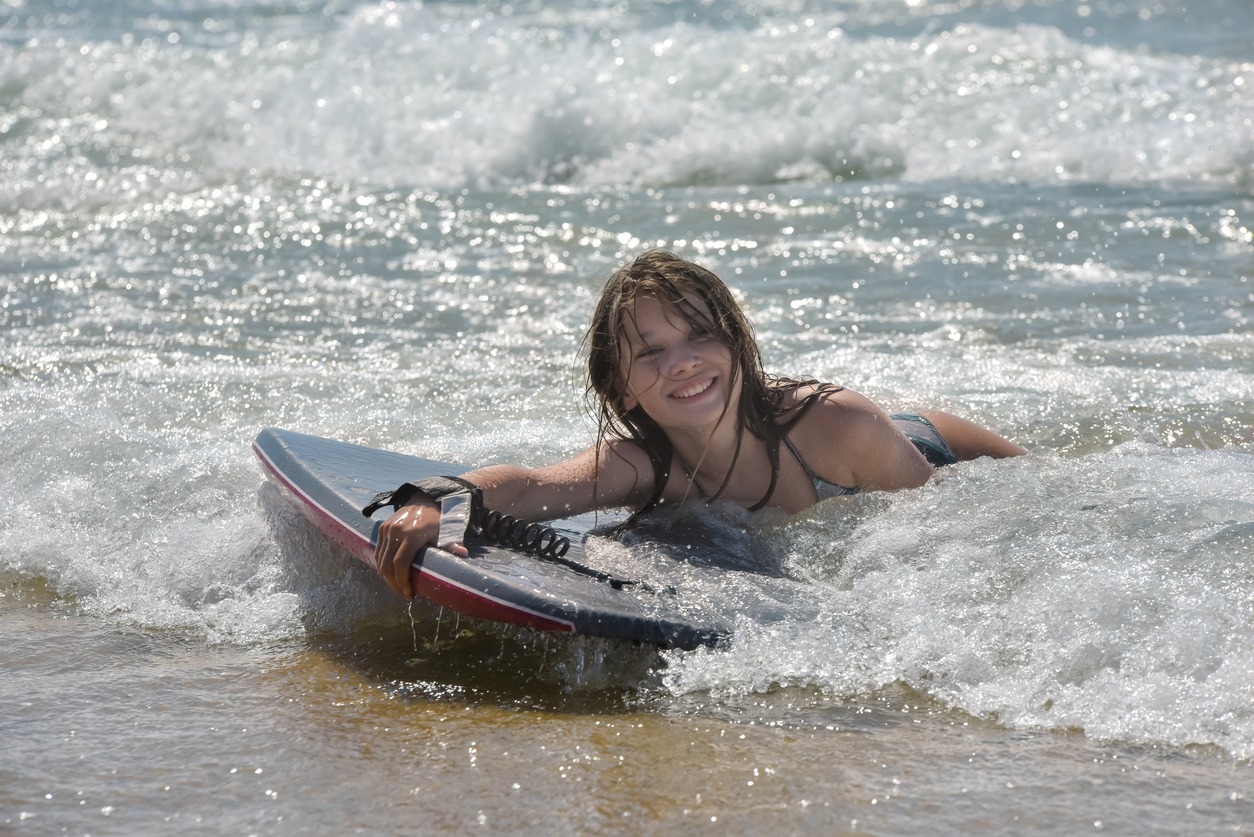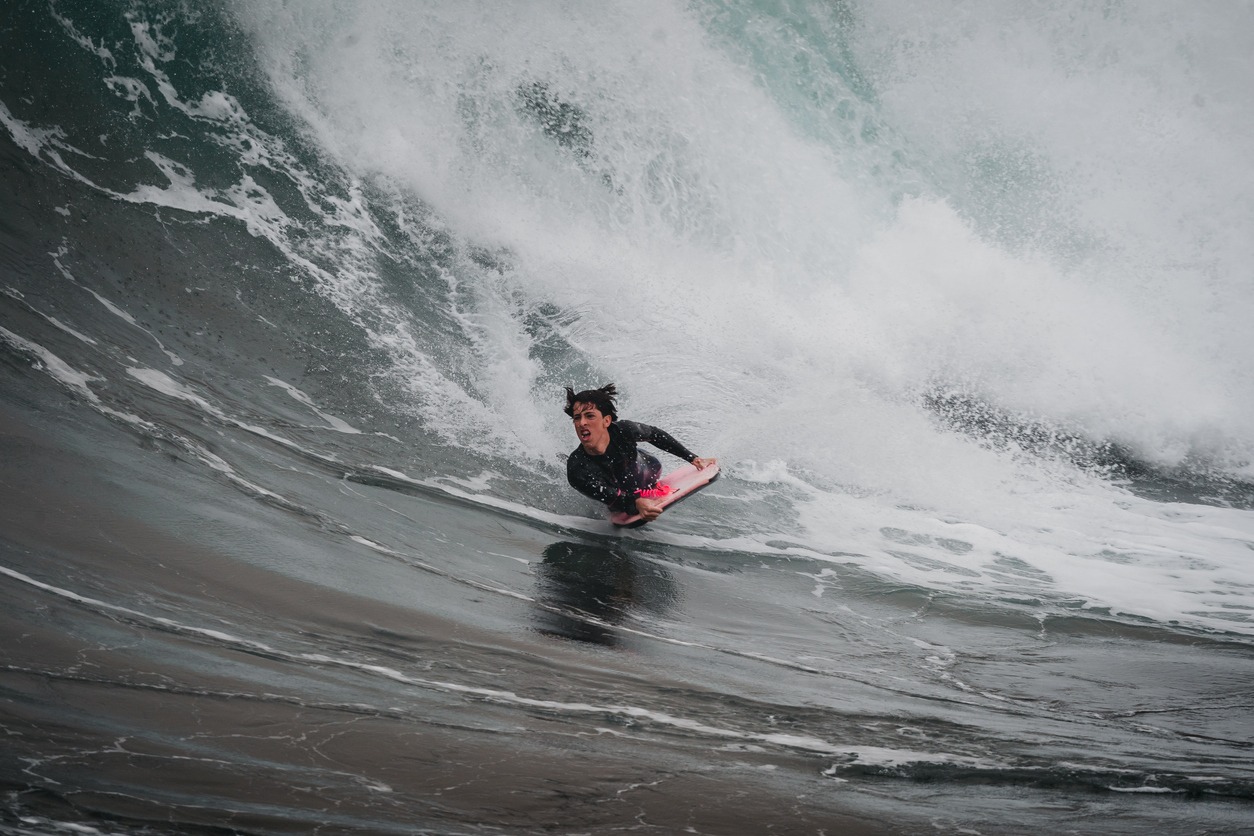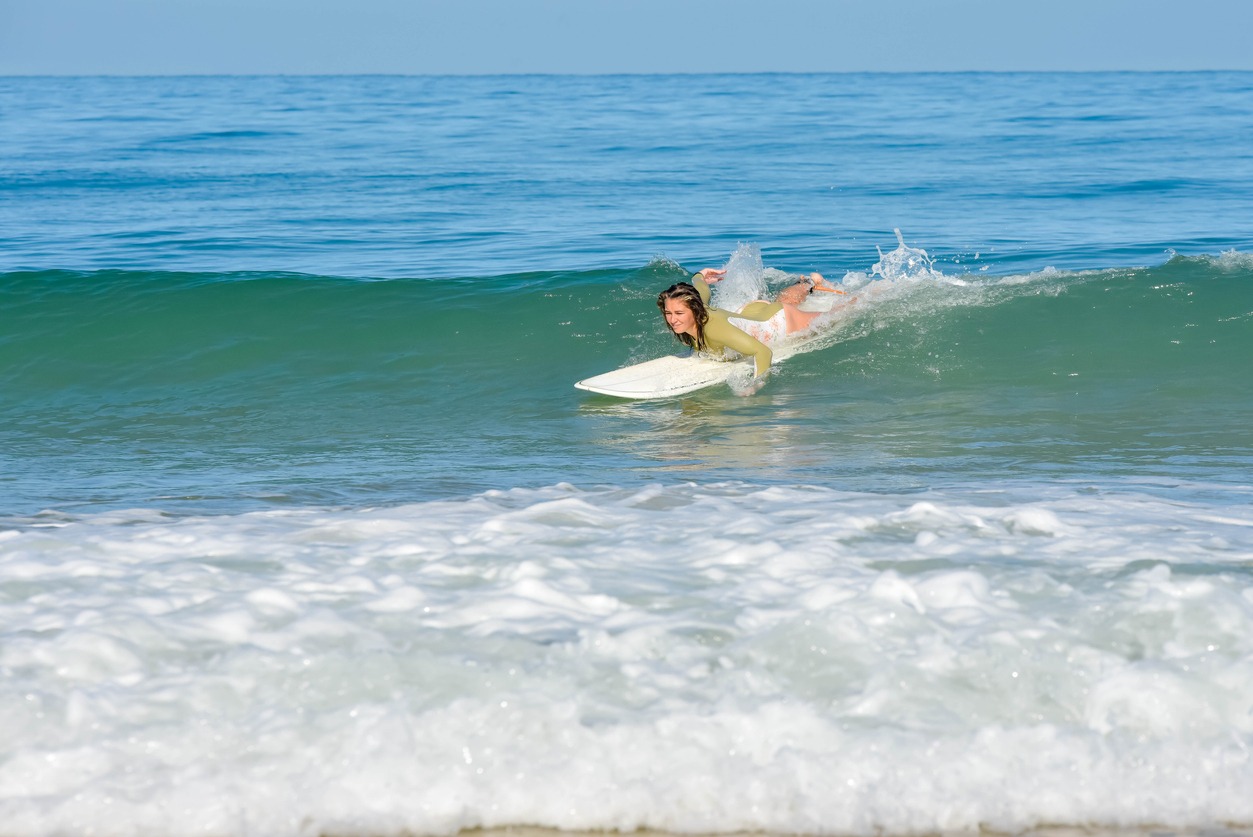A Complete Guide to Competitive Bodyboarding
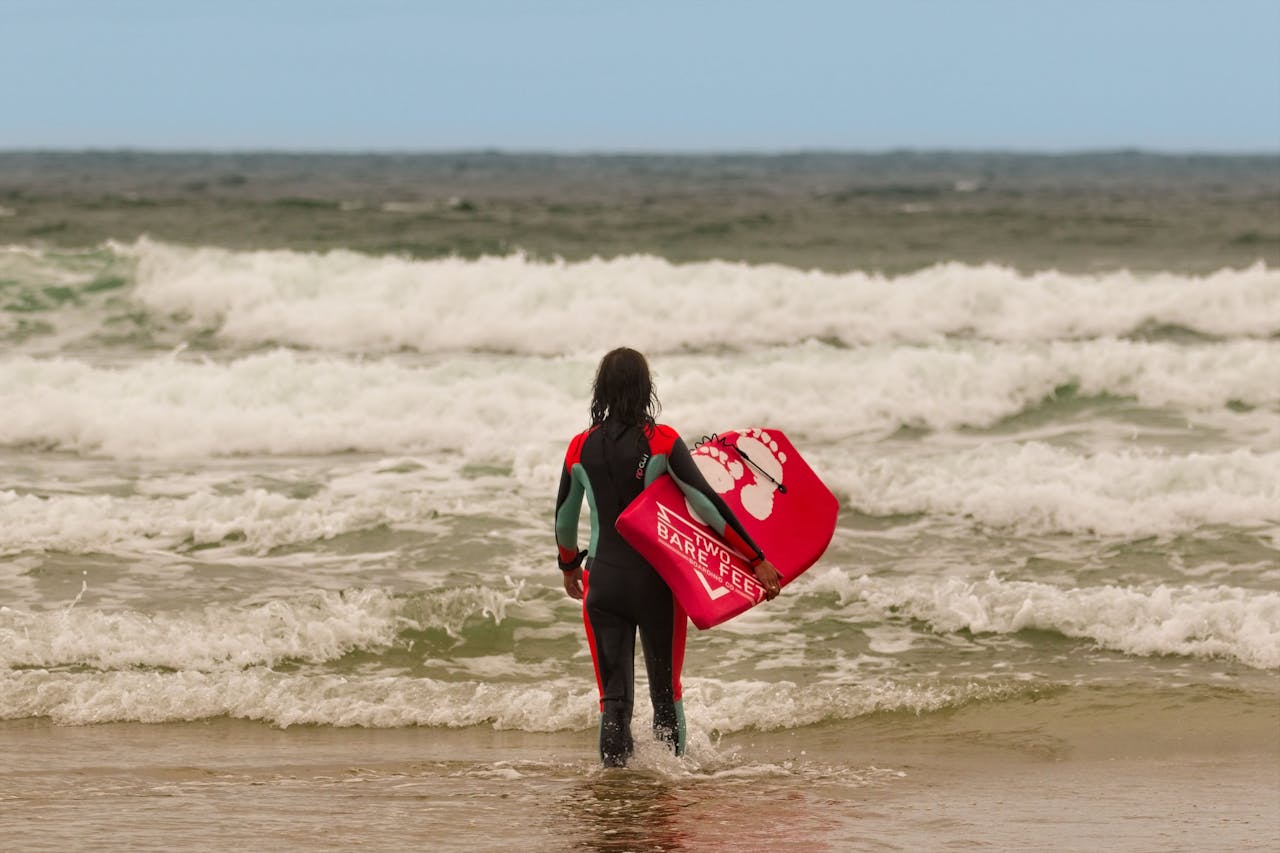
Competitive bodyboarding has come a long way since the invention of the Morey Boogie board in the 1970s. To excel in this thrilling sport, you'll need the right equipment, including a high-quality bodyboard and wetsuit. Become proficient in fundamental techniques like proper body positioning and wave selection before progressing to advanced maneuvers like aerials and tube riding. Understand competition formats, judging criteria, and training strategies to enhance your performance. The Association of Professional Bodyboarders (APB) organizes global events, offering a pathway to professional competition. Whether you're a beginner or aspiring pro, there's always more to explore in the ever-changing world of competitive bodyboarding.
Origins of Competitive Bodyboarding
From its humble beginnings in the 1970s, competitive bodyboarding has evolved into a thrilling water sport that enthralls riders and spectators alike. The invention of the "Morey Boogie" board in the '70s revolutionized wave riding, allowing you to perform more advanced maneuvers and pushing the boundaries of what was possible in the surf. The term "Boogie" refers to the lively and energetic style of riding these boards, which was a key factor in the sport's growth and popularity.
As the sport gained traction, the 1980s saw the emergence of organized competitions, attracting a growing number of enthusiasts. This paved the way for the development of professional circuits and the establishment of the International Bodyboarding Association (IBA) in the 1990s. The IBA created a standardized Rule Book, ensuring fair competition and consistent judging across events.
The World Bodyboarding Championships and other major events began drawing top riders from around the globe, showcasing their skills at renowned surf breaks like Shark Island. These competitions fueled the sport's evolution, with athletes continually pushing the limits of performance. The rise of the Professional Bodyboarding World Tour further legitimized the sport, creating a platform for riders to compete at the highest level and inspiring future generations of bodyboarders.
Essential Equipment and Gear
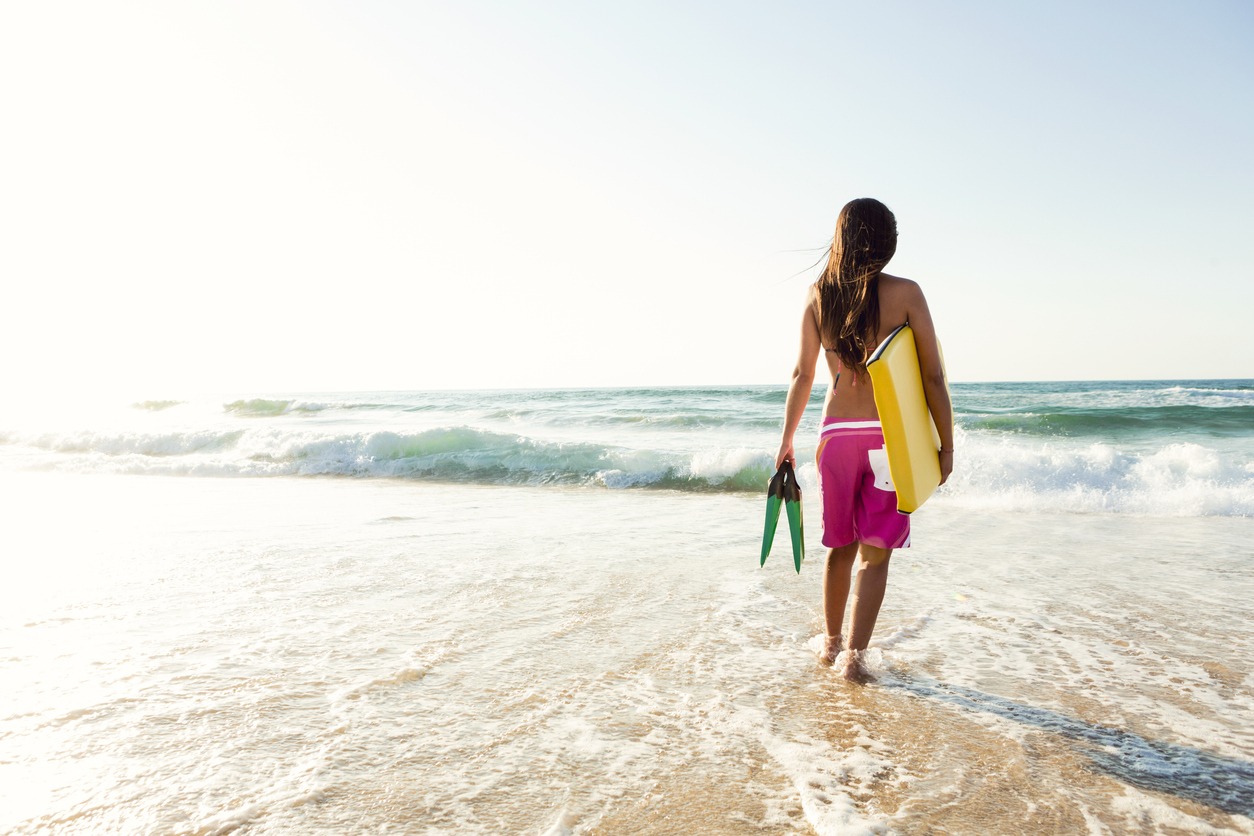
Competitive bodyboarding invariably requires specific equipment and gear to guarantee safety, performance, and comfort in the water. You'll need a high-quality bodyboard ranging from 40 to 54 inches in length, made with a foam core and durable plastic or polyethylene skin. Look for boards with nose and tail channels, contoured rails, and specialized fins for better maneuverability and wave performance.
Don't forget these essential items:
- Wetsuit, gloves, and booties for thermal insulation in cooler waters
- Leash to keep your board attached to your wrist or ankle
- Helmet for head protection, especially during competitions and big wave riding
- Fins for improved propulsion and control
- Wax to maintain grip on your board
Safety is paramount, so always wear a leash to keep your board close. In colder climates, you'll need a wetsuit, gloves, and booties to stay warm and protected from abrasion. For competitions and big wave riding, consider wearing a helmet to safeguard against impacts. By investing in the right equipment and gear, you'll be well-prepared to tackle the challenges of competitive bodyboarding and improve your performance in the water.
Mastering Fundamental Techniques
Once you've got the right gear, it's time to focus on perfecting fundamental techniques. Proper body positioning and weight distribution on your bodyboard are indispensable for executing effective turns, cutbacks, and barrel rides. You'll need to develop proficiency in wave selection and timing to catch waves and maintain speed throughout your ride.
To adapt to diverse wave conditions, grasp different fin techniques, including drop-knee, prone, and bodysurf stances. Start by practicing controlled bottom turns and carving maneuvers, as these form the foundation for progressing to more advanced aerial and tube-riding techniques. Handling challenging wave environments with coral reefs and sharp rock edges is an important aspect of competitive bodyboarding, requiring mental strength to adapt to constantly changing conditions.
To build a solid foundation, consider practicing critical skills in wave pools or calm water before tackling larger, more demanding surf. This approach will help you refine your techniques in a controlled environment. As you progress, focus on perfecting your weight distribution to enhance your control and maneuverability on the board.
Advanced Maneuvers and Strategies
Advanced maneuvers and strategies augment competitive bodyboarding to new heights. As you progress in the sport, you'll need to command a range of impressive techniques to stand out in competitions. Aerial maneuvers like front flips, back flips, and spins showcase your skill and creativity, while powerful bottom turns and aggressive cutbacks help you generate speed and maintain control on the wave face.
The signature tube ride remains the holy grail of bodyboarding, requiring precise positioning and timing. To excel in competitions, you'll need to develop strong wave reading abilities, allowing you to strategically select waves and maximize scoring opportunities. Mastering various power slides, snap turns, and other advanced techniques is indispensable for pushing the boundaries of the sport.
To amplify your competitive bodyboarding game, focus on:
- Perfecting aerial maneuvers for added flair
- Commanding the art of tube riding
- Developing powerful bottom turns and cutbacks
- Honing your wave reading abilities
- Expanding your repertoire of advanced techniques
Understanding Competition Formats
The arena of competitive bodyboarding is structured around specific competition formats designed to showcase riders' skills and determine champions. You'll typically find competitions organized using a heat-based system, where you're grouped with other riders to compete in short, timed sessions. These heats usually last between 15 to 30 minutes, giving you a limited window to catch your best waves and impress the judges.
As you compete, you'll need to focus on wave selection criteria, choosing the most promising waves to maximize your scoring potential. Judges will evaluate your performance based on factors like the difficulty of your maneuvers, your wave selection, and your overall style. The highest-scoring riders advance through the competition, which often includes qualifying rounds, semifinals, and a final.
You'll find that competitions are typically divided into categories based on age, gender, and skill level. This structure guarantees fair participation across the bodyboarding community. As you progress through the event, you'll face increasingly tough competition, with the ultimate goal of being crowned champion at the end of the contest.
Training for Peak Performance
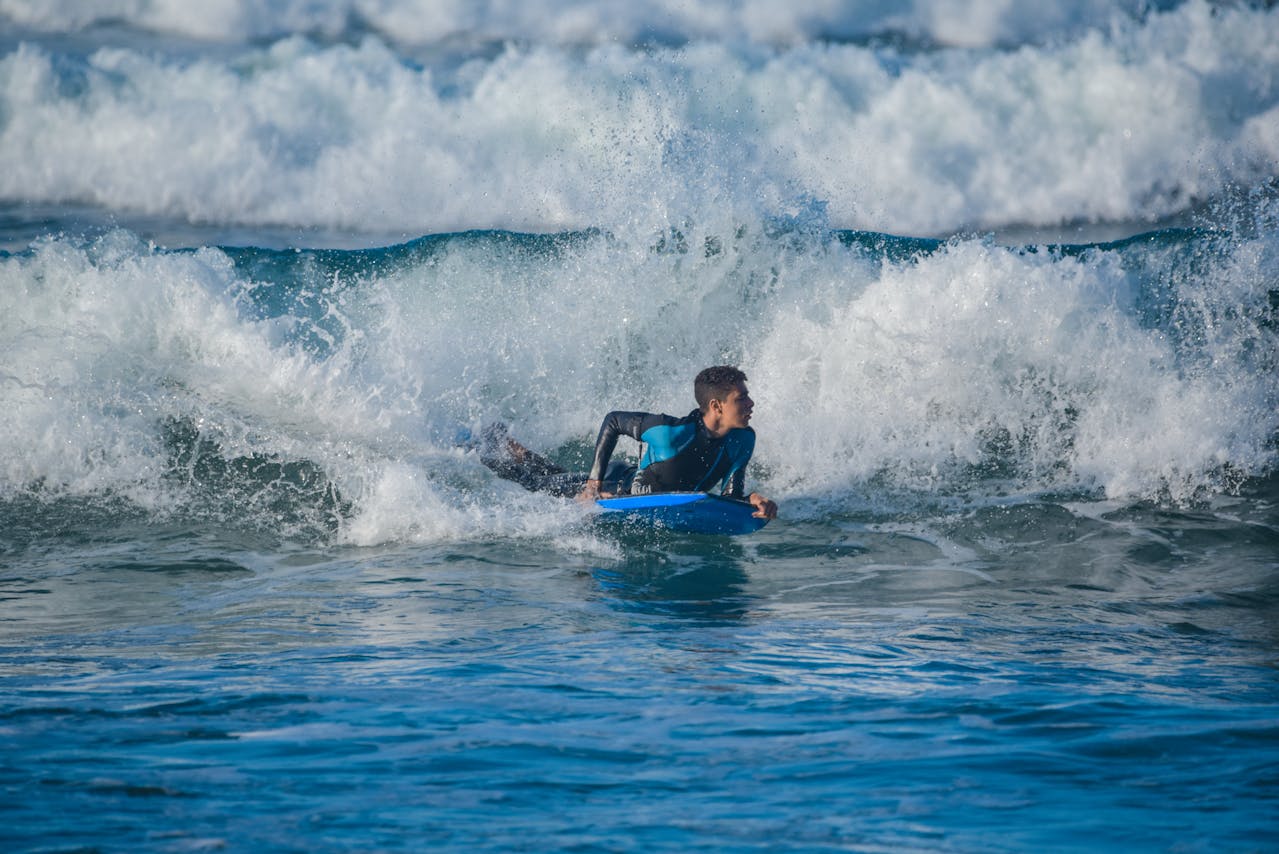
To reach peak performance in competitive bodyboarding, you'll need a thorough training regimen that goes beyond just riding waves. A well-rounded approach incorporates strength training, cardio, and flexibility exercises to develop the physical attributes necessary for success. You'll want to focus on building core strength, power, and endurance to handle the demands of competition.
Mental preparation is equally important. Practice wave visualization techniques and mental imagery to enhance your ability to anticipate and react to changing conditions. This mental training will complement your physical skills and give you an edge in competitions.
Regular video analysis with coach feedback, off-season skill development programs, proper nutrition and hydration strategies, simulated wave riding and aerial maneuver practice, and strength and conditioning workouts are five key elements to include in your training.
Don't overlook the importance of proper nutrition and hydration. These are indispensable for maintaining energy levels and aiding recovery, especially if you're competing in multiple events. By incorporating all these elements into your training regimen, you'll be well-prepared to perform at your best when it matters most.
Navigating the Professional Circuit
Once you've honed your skills through rigorous training, it's time to test your mettle on the professional bodyboarding circuit. The Association of Professional Bodyboarders (APB) organizes global competitions at iconic surf spots like Pipeline and Teahupoo, offering you a chance to showcase your talents on the world stage.
To compete at this level, you'll need to adhere to the APB's rules and regulations while maintaining peak physical condition and wave riding proficiency. You'll face off against top riders from around the world in categories based on age, gender, and skill level. Judges will evaluate your performances based on wave selection, technical execution, and creativity, so it's essential to bring your A-game to every heat.
The APB World Tour offers substantial prize purses and global recognition, attracting worldwide attention to the sport. As you navigate the professional circuit, you'll have the opportunity to push your limits, gain exposure, and potentially make a name for yourself in the bodyboarding community. Remember, success on the tour requires dedication, adaptability, and a willingness to constantly improve your abilities.

